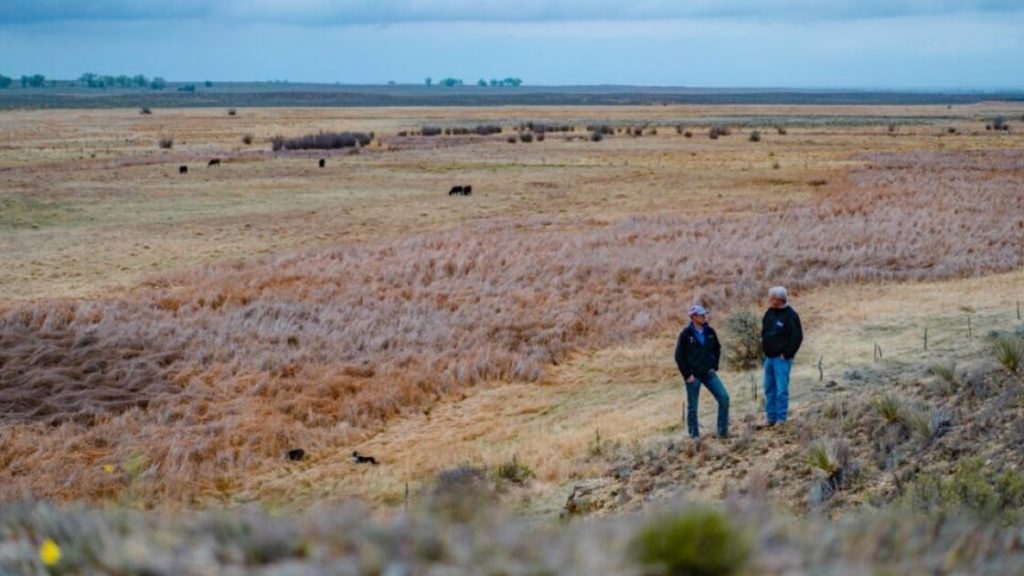Ranchers often consider themselves caretakers of their land and it’s that kind of thinking that’s motivating them to sign up for an innovative new approach called rangeland carbon offsetting.
And so they’ve had to downsize their herd three times in the past couple of decades, mostly because of drought and then had to build back up and it really becomes a financial hardship.
And in the United States, they’re one of the least protected in the northern Great Plains region, almost 90 percent of intact grasslands are privately owned, which means that it’s not up to the federal government or state parks or anyone; it’s up to the private landowners to manage them in a way that’s good for grassland species.
And so what rangeland carbon credits are is ranchers are paid to ensure that the grassland under their care is never plowed to make way for row crop agriculture.
The Mays had historically been renting their land, and when they got the option to purchase their land, Dallas May, who’s the head of the ranch right now, his first thought was, how can we protect this land forever? And so he reached out to a lot of conservation organizations and initially was just talking just about easements.
But the other thing I should note is that we’re seeing the price of carbon rapidly increasing and so even the sort of total value of carbon offset exchanges for 2021 was a 60 percent increase over 2020.
It can be individuals, it can be organizations, it can be corporations who either make a carbon neutral or carbon zero commitment, or who they flew and they want to offset their travel.
And that project developer is going to be able to look at your land and the county level information and your soil stuff, and they’re going to be able to tell you if you’re eligible and what sort of return you might be looking at.
